Selection of the most important magnetization types
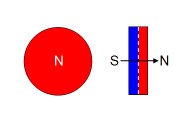 |
axially magnetized | 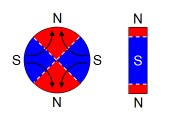 |
multi pole magnetized on outside diameter e.g. 4-poles |
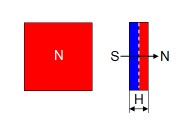 |
magnetized through H | 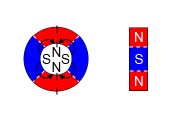 |
multi pole magnetized on inner diameter e.g. 4-poles |
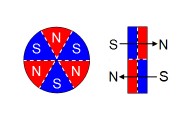 |
axially sector style magnetized e.g. 6-poles | 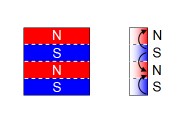 |
one side multi pole magnetized |
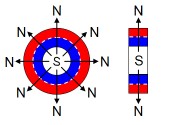 |
radially magnetized | 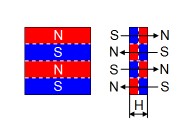 |
multi pole magnetized through H |
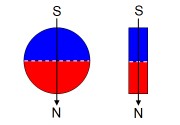 |
diametrally magnetized | 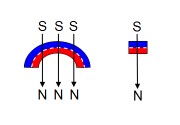 |
diametrally magnetized |
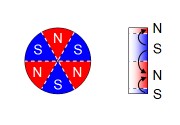 |
one side sector style magnetized e.g. 6-poles | 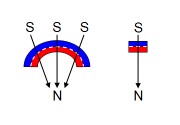 |
radially magnetized |
Magnetic Units
Magnetic expressions
Anisotropy (magnetic differences)
This means that certain physical properties in different directions have different values. With anisotropic magnets, the magnetic powder is aligned during the pressing process in a strong magnetic field. In the direction of this magnetic field higher magnetic values result than transversely.
See also “preferred direction”
Curie-Temperature
The temperature at which a ferromagnetic material loses its magnet properties completely. It is named after Madame Curie, physicist and chemist.
Irreversible
Not reversible or not repeatable. In the case of an irreversible change, e.g. due to the influence of temperature, the magnetic values do not return to their original values.
Isotropic
Is the equal physical and magnetic property in all directions. See also “preferred direction”
Magnetic flux
The magnetic flux (Φ) is the total number of magnetic lines of force through a given cross section. The magnetic flux cannot be measured directly, but must be determined from the electrical voltage with which it is linked by Maxwell's equations by means of a Helmholtz coil.
The units for indicating the magnetic flux are: VS = Volt second (mVs = Milli volt second) Wb = Weber (mWb = Milli Weber) M = Maxwell <brVs or Wb are the current SI units, although the older cgs unit M is still used.
1 Vs = 1 Wb = 108 M
Due to the different sizes of the coils, the magnetic moment (mc) must be calculated for comparison. The coil constant (K) must be included in this calculation.
mc = Φ x K
mc = Magnetic moment in Vs x m / Wb x m / M x m
Φ = Magnetic flux in Vs / Wb / M
K = Coil constant in m
Measuring example magnet X
Coil 1 = Φ 1000,00 mVs x K 0,000582 cm = mc 0,582 mVs x cm
Coil 2 = Φ 37,72 mVs x K 0.01543 cm = mc 0,582 mVs x cm
Operating load line
Connection line between the working point and the zero point in a B - H or J - H diagram.
Operating point
The point on the demagnetization curve which represents the values of the flux density B and the field strength H in the working state. Basically, the larger the length of the magnet in the direction of magnetization, the higher the operating point at Br. In the closed magnetic circuit where no field emerges, the operating point corresponds approximately to Br.
Preferred direction
The preferred direction is the orientation of the magnetic crystals in a particular direction.
By a preferred direction (anisotropy) impressed during the fabrication process, the magnetic values can be improved.
| Graphic | Description |
|---|---|
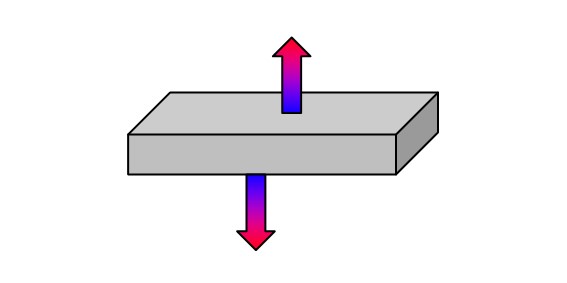 |
Anisotropic magnets Anisotropic magnets are produced in a magnetic field and have for this reason a preferred direction. They have only in this preferred direction good magnetic properties and can only be magnetized in this direction. Anisotropic magnets achieve significantly higher magnetic values than isotropic magnets. |
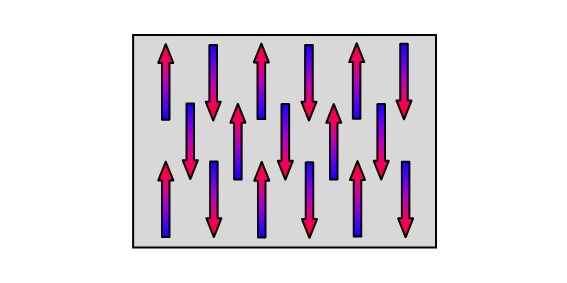 |
Schematic representation of the orientation of the magnetic crystals. |
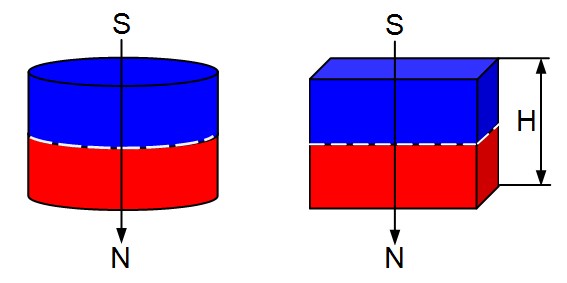 |
Axially oriented magnets Round and ring magnets are mainly oriented axially, whereas square magnets have their preferred direction through the height. |
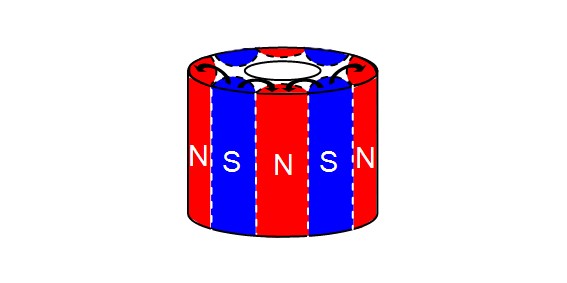 |
Pole-oriented magnets For pole-oriented magnets, the alignment is applied as the subsequent multi-pole magnetization is performed. |
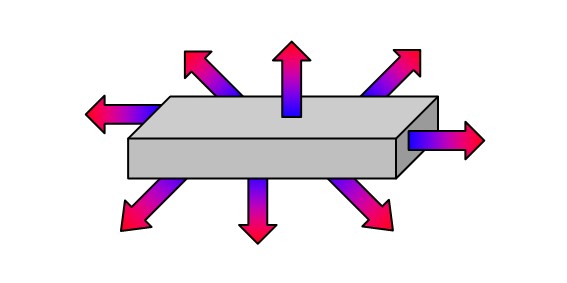 |
Isotropic magnets Isotropic magnets have no preferred orientation. Therefore it is possible to select any direction and type of magnetisation. |
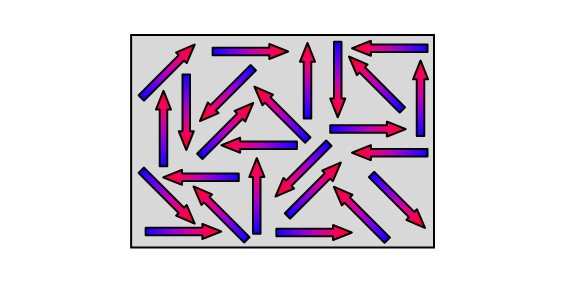 |
Schematic representation of the orientation of the magnetic crystals. |